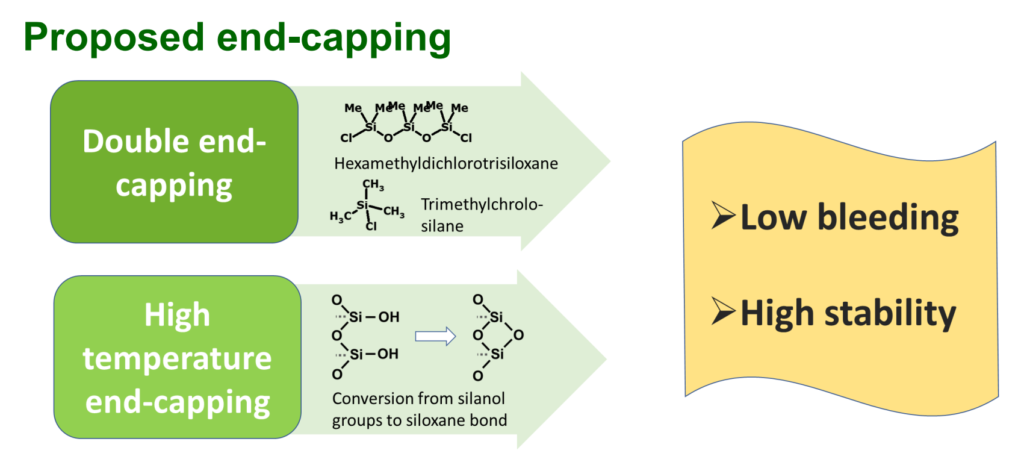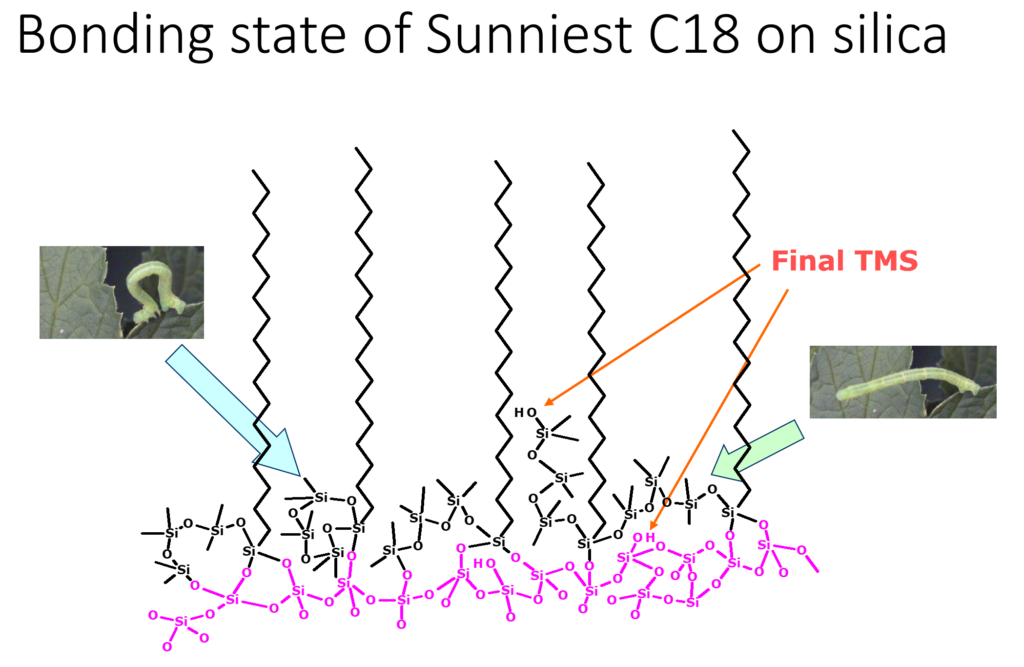212-204-0075
info@pyvot.tech
A Novel End-capping for Reversed-Phase For LC/MS SunShell and Sunniest Column
End-capping has been recognized to be an important factor for a silica-based reversed-phase column. In this industry, not only bonding with an end-capping reagent but also conversion of silanol groups to siloxane bonds by heating were evaluated as an end-capping.
The use of reversed-phase columns, such as C18, has been prevalent in diverse fields including pharmaceuticals, medicine, environmental science, industrial applications, and food production. Silica-based C18 columns, in particular, have demonstrated high performance. However, peak tailing of basic compounds due to residual silanol groups on the silica surface remains a challenge that requires sufficient end-capping. End-capping is a critical aspect of silica-based reversed-phase column design, with initial methods involving the reduction of residual silanol groups through bonding with trimethylsilyl reagents (TMS). Over time, end-capping techniques have improved with the development of various reagents that feature not only monofunctional but also difunctional groups, as well as higher reaction temperatures or longer reaction times.
Recent advancements have seen column manufacturers adopt innovative methods, such as adding a positive charge to the silica surface, to counteract the influence of residual silanol groups on basic compounds. This study used a combination of end-capping methods, including bonding with a difunctional end-capping reagent like hexamethyl dichloro trisiloxane followed by trimethylchlorosilane. The two end-capping reactions were carried out at over 200 °C under a nitrogen atmosphere, leading to high stability even under acidic pH conditions. The C18 column was subjected to 10,000 continuous analyses using gradient elution with 0.1% trifluoroacetic acid and acetonitrile at 40 °C. Bleeding from the column was assessed using an MS detector, and simultaneous analysis of pesticides was performed using a semi-micro column, with information-dependent acquisition (IDA) measurement using a nano column also evaluated. Regenerate response

End-capping with hexamethyldiclorotrisiloxane and TMS on C18 silica

Another end-capping with heating on C18 silica, reduction of silanol groups

Comparison of 2 kinds of end-capping





Conclusion:
| Hexamethyldichlorotrisiloxane was used as an end-capping reagent for the first end-capping step. Then trimethylchlorosilane (TMS) was used as an end-capping reagent for a second end-capping step. |
| Silanol groups were changed to siloxane bonding by heating on C18 silica. |
| Stability under acidic pH conditions was improved by a proposed end-capping. |
